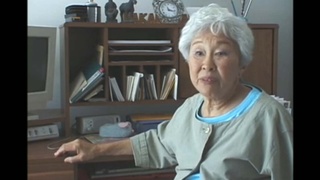Interviews
Deciding whether to answer "yes-yes" on the loyalty questionnaire in order to leave camp
That portion they were stressing your loyalty, not whether you could leave the camp. And if they... I hadn't even given it a second thought about if I answered “yes-yes” I could leave camp. It was just my personal feeling, if they want to know my personal feeling, well they'll get it. So analyzing the questions as they did, I just went ahead and thought what I thought best, whether it's against the camp rules or whatever. So no, no, I never even gave it a thought of using that to get away from camp. To me, I thought that was a regular loyalty question and I should answer loyally. My heart, my feelings.
Date: July 25, 1997
Location: Washington, US
Interviewer: Larry Hashima, Stephen Fugita
Contributed by: Denshō: The Japanese American Legacy Project.







